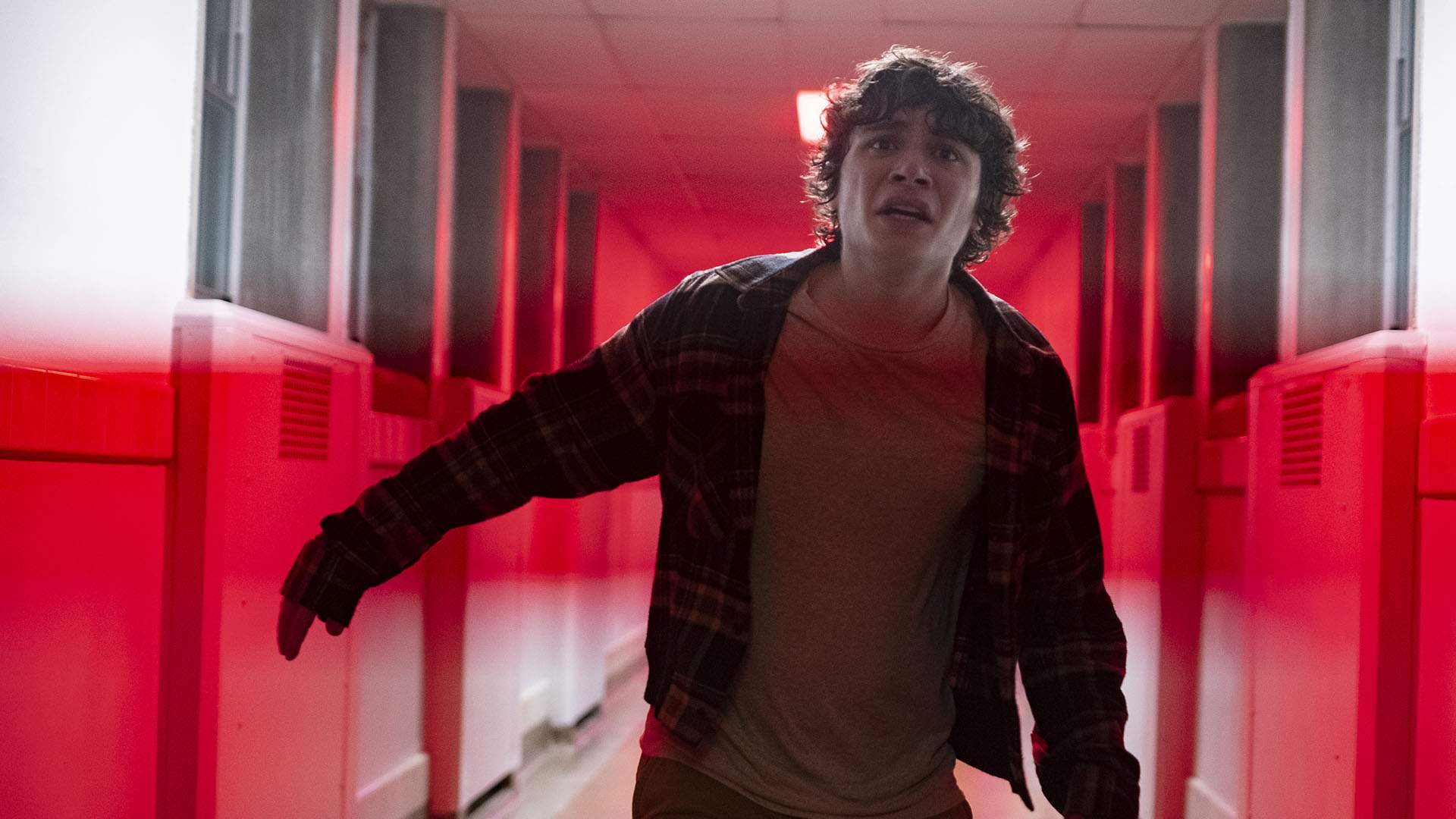Scary Stories to Tell in the Dark
The popular children's book series gets the big-screen treatment — with bumps, jumps and something meaningful to say.
Overview
It's Halloween, 1968, in the fictional town of Mill Valley. With an opening montage reminiscent of many a movie, Scary Stories to Tell in the Dark shows viewers just what that means. Locals prepare to celebrate the spookiest day of the year, with decorations littering the town. Pumpkins are a common sight, naturally. Horror-obsessed aspiring writer Stella (Zoe Margaret Colletti) and her fellow teen outcast pals, Auggie (Gabriel Rush) and Chuck (Austin Zajur) are getting ready to go trick-or-treating, too; however it's the bully they're afraid of that initially proves pivotal. At his family farm, Tommy (Austin Abrams) and his offsiders attack a scarecrow. Under the autumn sky, surrounded by towering crops stretching far and wide, they smash and bash the figure mercilessly. Each blow knocks the straw man around, but it doesn't fight back. It can't — it's inanimate. But that doesn't mean that there won't be repercussions.
Based on the 80s and 90s children's book series of the same name, Scary Stories to Tell in the Dark doesn't trade in a 'what goes around, comes around' mentality — although Tommy isn't destined for a hero's journey. Rather, director André Øvredal (The Autopsy of Jane Doe) and his screenwriters (The Lego Ninjago Movie's Dan Hageman and Kevin Hageman, plus Oscar-winning The Shape of Water filmmaker Guillermo del Toro) explore the idea that pain is part of a cycle. Whether you're inflicting, receiving or helping to relieve it, trauma isn't a one-way event or a one-off occurrence. In the film's intermittent narration, Stella explains this in a different way, more befitting the movie's literary origins: "Stories hurt. Stories heal".
After a trip to a supposedly haunted local house leaves Stella in possession of a spooky collection of stories, her words start ringing true. Decades earlier, the book belonged to Sarah Bellows, who was brutalised by her wealthy family, locked in the basement and — as the legend goes — lured in kids with eerie tales, then killed them. Stella doesn't necessarily believe the myths, until fresh tales begin writing themselves into the dusty tome in a bloody scrawl. Each new story mentions someone that Stella knows, such as Tommy, Auggie, Chuck and the mysterious drifter, Ramon (Michael Garza), that she meets at a drive-in screening of Night of the Living Dead. As foretold on the page, scarecrows soon seek revenge, monsters shuffle through creepy asylums and stews come seasoned with body parts, among other unnerving incidents.
Tasked with adapting short stories, the filmmakers find an effective solution to what could've been the movie's big struggle: moulding standalone tales into a cohesive whole. Working through a selection of the printed collection's chapters, Scary Stories to Tell in the Dark still feels episodic. Indeed, each segment could work on its own as a short film. That said, this isn't a cobbled-together anthology linked by loose connective tissue (or, if they've sprung to mind, a Stranger Things or IT rip-off). Delving deep into what each spooky tale means to Stella and her friends, Øvredal gives his framing narrative as much weight as the movie's individual parts. These stories reflect events, emotions, fears and worries in the characters' lives, and tie into the picture's setting and time period. The Vietnam War rages on, Richard Nixon is about to be elected to America's highest office and racism makes its presence known — and, via all of the above, a generation just coming of age begins to realise that horror really exists.
When it comes to the tangible frights — the bumps, jumps, creaks and the like — Scary Stories to Tell in the Dark also finds an apt approach. As he demonstrated in both The Autopsy of Jane Doe and Troll Hunter, Øvredal knows that less is often more. When needed, though, he's not afraid to throw severed heads around, unleash a stream of spiders or watch dissembled limbs combine into a demon. He's not averse to pushing his fresh-faced cast to their limits, either, or deploying Breaking Bad's Dean Norris (as Stella's dad) as the fount of all gravitas. But, whether in subtle or overt mode, the film always sticks to its point, showing how frightful sights, and the underlying forces and troubles they represent, can manifest in many forms.
Still, Scary Stories to Tell in the Dark does tussle with one tricky spot. While vastly darker than Goosebumps, this is an adolescent-friendly affair, sparking an all-too-generic ending and sequel setup. When it takes the easy route in wrapping things up, the movie is at its worst. Thankfully for horror buffs of all ages, that's doesn't spoil the preceding fun. For most of its running time, this is a suitably creepy and thoughtful film, taking familiar parts, twisting them in unnerving ways, and layering its stories with both scares and meaning.





